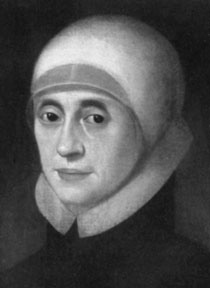A Woman's Place
What was the position of women in religious leadership in the nineteenth century?
Mother Theresa’s mentors, Bishop Johann Michael Sailer, Bishop George Michael Wittmann, Father Francis Sebastian Job, and Father Mathias Siegert supported Mother Theresa in establishing a religious community with one central government, led by a woman. The unity provided by such governance would strengthen the members with common formation, common educational philosophy, and an international vision. Modeled after the community of Acts 2 and 4, the sisters would hold all things in common. Like the Roman Catholic Church with one central government in Rome and one supreme pontiff, the School Sisters of Notre Dame under a general superior could be sent to any part of the world and still retain the unity of spirit.
Prior to the 1800s, there were few examples of a woman leading a religious order without a man directing her administration. The Holy See had approved the position of the general superior in the rule of the Sisters of Mercy in 1666. But her authority was limited and she was totally subject to the general superior of the Lazarists. As foundress of the Carmelites, Teresa of Avila had spoken of these difficulties by saying: “…Since the world’s judges are sons of Adam and all of them men, there is no virtue in women that they do not hold suspect…” This paragraph was deleted from her work by Father Garcia de Toledo “who thought it was too daring for the attitude toward women that was characteristic of the times. Teresa complied and omitted the passage.”1

Mary Ward
Mary Ward, the foundress of the English Ladies wanted to establish a community under the direction of a woman that could go out in twos and threes to educate the poor. She had taken the Jesuit constitution and changed all the masculine pronouns to feminine, submitting it as a rule of life for her sisters. She was punished by imprisonment for suggesting such a role for women (1631). The place of her imprisonment was the Poor Clare convent in Munich. In 1843, King Ludwig gave Mother Theresa this former Poor Clare convent to be her Motherhouse.
Like those before her, Mother Theresa was challenged to be faithful to the Spirit and the hierarchy: a delicate balance. Her spirituality was rooted in prayer and strengthened by retreats. She had made the Spiritual Exercises of St. Ignatius and both Bishop Sailer and Bishop Wittmann had been trained in the Jesuit tradition. In addition, she may have been aware of the difficulties faced by St. Ignatius of Loyola in founding the Jesuits.
He, like Teresa of Avila, had to be careful not to fall into the hands of the Inquisition. In the Spiritual Exercises of St. Ignatius there is an encouragement to pray over “Rules for Thinking with the Church,” to pray for the grace to be faithful to the Spirit and respect the teaching magisterium of the church. “Ignatius expresses concern for living faithfully in three areas of our church life: observing worship, dealing with authorities, and evaluating preaching and teaching. In keeping with his Presupposition [22] at the beginning of the Spiritual Exercises book, Ignatius stresses the necessity of a positive attitude, which often requires great personal effort whenever we approach any of these areas of church life. We seek to understand rather than to condemn, we favor the better interpretation, and we respect and use the proper channels of redress.”2
Facilitator directions are available.
Footnote:
- The Collected Works of Teresa of Avila, (1515–1582) trans. by Otilio Rodriguez, OCD and Kieran Kavanaugh, OCD, (Washington: Institute of Carmelite Studies, 1980), Vol. 2, p. 50 and p. 459.
- David L. Fleming, SJ, Like the Lightning: The Dynamics of the Ignatian Exercises (St. Louis: Institute of Jesuit Sources, 2004) p. 148.